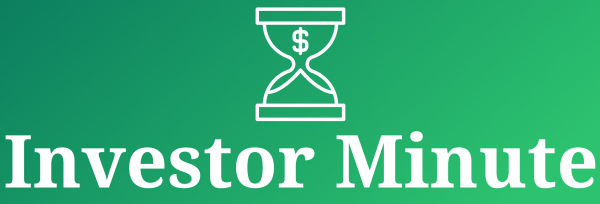According to the Association of Investment Companies (AIC), the private equity trust sector has produced the best share-price returns of any sector over one, five and ten years. Over five years, it has done nearly twice as well as the second-best sector, North America, and over ten years, at 534%, nearly two-and-a-half times as well.
Yet private equity trusts trade at some of the widest discounts to net asset value (NAV) in the market, averaging 21% for directly investing trusts and 37% for funds of funds (as of 3 April). Admittedly, the data is distorted by the giant 3i, trading at a 49% premium and with 73% of its asset value accounted for by a single investment, European discount retailer Action. 3i is the best-performing of the private-equity trusts, multiplying investors’ money nearly tenfold over a decade.
And yet another six trusts are also in the AIC’s list of the 25 best-performing investment companies over ten years, showing that 3i is not a complete outlier. Two of these, Hg Capital and Oakley Capital, are direct investors and three, CT Private Equity, Patria and ICG Enterprise, are funds-of-funds. So why are investors so averse to private-equity trusts, especially the funds of funds?
Sign up to Money Morning
Don’t miss the latest investment and personal finances news, market analysis, plus money-saving tips with our free twice-daily newsletter
Don’t miss the latest investment and personal finances news, market analysis, plus money-saving tips with our free twice-daily newsletter
The sceptics are wrong
The excuse for widening discounts in 2022 was that valuations had supposedly become unrealistic as interest rates rose and equity markets fell. Funds that sought to prove their asset values by selling investments at a premium to NAV were met with scepticism; perhaps they were just selling their best assets?
Three years on, with continued sales and strong underlying performance, that scepticism looks misplaced. Asset value growth has slowed (average investment returns are 5% over one year, but 14% compounded over five), but that has largely been a function of higher interest rates, which have started to fall.
Higher discounts for funds-of-funds were justified by the low visibility of underlying investments, which individually are too small to make a difference to performance; the double-charging implied by a fund-of-funds structure, and the uncertainty resulting from “commitments” to new funds. The manager of a new fund will take several years to invest it so does not ask investors who commit to it to pay upfront, but only as the funds are required.
Years later, the investments will be sold and capital returned to investors, but the liquidation will be piecemeal and take several years. The fund-of-funds manager has to balance the drawdown of new capital against the return of old capital. This risks the fund either running out of cash, or having too much of it, dragging on returns. Brokers Stifel, however, point out that “there has been a major shift in the composition of these funds in recent years, which hasn’t received the attention it should have. This is the switch to co-investments, eg, direct company investments and away from fund-of-fund portfolios”. Pantheon International, they point out, was 100% invested in funds in 2023, but this has since fallen to 45%, with co-investments and other direct exposure accounting for 55% of the total.
A simplified structure
Co-investments, which mean investing alongside a fund rather than through it, avoid the double layer of fees, improve the visibility of the investments in the portfolio and remove the headache of managing long-term unfunded commitments. Allowing co-investment from the likes of Pantheon reduces the exposure and therefore the risk of the lead investor. The negatives for the co-investor are that they are minority investors with little or no influence over the investment and that co-investments are more time-consuming than simply investing in a fund.
The response of private-equity trusts to high discounts has been to accelerate share buybacks, which materially enhance NAV. Pantheon, for example, bought back £200 million of shares in the year to 30 May 2024 but only £12 million in the next six months, partly because buybacks have pushed the portfolio from net cash to net debt, and partly because outstanding commitments of £730 million are 31% of NAV. Still, with the shares trading at a discount of more than 40% to NAV and distributions on exits picking up, more buybacks can be expected when cash is available.
The investment return has been just 3% over the last year, but annualised at 13% over ten years. Moreover, the average uplift on exited investments in Pantheon’s last financial year was 20% (against a long-term average of 30%), and the performance of the underlying companies remains robust: they produced average revenue growth of 11% in the last year and 16% growth in cash generation.
Wide diversification
HarbourVest Global Private Equity (LSE: HVPE), trading on a near-40% discount to NAV, has doubled its allocation to buybacks from 15% to 30% of gross distributions received, which is expected to enable £180 million of buybacks this year, potentially reducing the number of shares by 9% for a reduction in assets of just 6%. Only 20% of the portfolio is accounted for by co-investments, but the other 80% is invested in 63 separate HarbourVest-managed funds-of-funds. This reduces the visibility of the underlying portfolio, but also the risk of being embarrassed by over-commitments.
With 1,151 underlying fund managers and 14,385 underlying portfolio companies, the trust is highly diversified. A 15% exposure to venture capital is unusual and has held performance back recently. But the long-term record of a 15.3% annualised investment return over ten years is impressive, as is the 17% growth in cash generation.
At first sight, the sale by ICG Enterprise Trust (LSE: ICGT) of exposure to eight mature fund investments at a 5.5% discount to NAV looks disappointing, but the £62 million realised enables it to buy back shares on a 37% discount to NAV as well as commit to new funds. Sales of participations in the secondary market always attract a lower price than full exits when the underlying investments are sold; ICGT disclosed an 18% uplift to carrying value from 12 full exits in its latest quarterly results. Over the last ten years, annualised investment returns have been 13.5%, while the one-year return of 6.5% is higher than average. Like other funds, it has increased its exposure to direct investments (30%-35% of the portfolio) with 40%- 50% in primary investments (bought at the start) and 25%-30% in secondaries (bought second-hand, usually at a discount). The former offers the best overall returns, but primaries usually gain value momentum slowly; the latter allows the investor to jump in later, provided that there is a willing seller. Like Pantheon and HarbourVest, ICGT invests globally, but unlike them, only in buyout funds.
Oakley is a direct investor with a concentrated portfolio of 33 private European companies in four sectors. But it still trades at a 32% discount to NAV, despite an annualised five-year return of 16%. This includes returns of just 2% and 4% in the last two financial years (to the end of February), with higher interest rates depressing valuations.
Furthermore, recent disposals have left 8% of the portfolio in cash even despite nearly 20% of it having been invested in 2024. These new investments have not yet built up valuation momentum. Despite the cash, Oakley has cancelled its modest dividend to free up £20 million per annum for share buybacks. It also announced a £420 million commitment to a new fund, expected to be drawn over five years.
Dull market conditions have meant that the shares of Hg Capital Trust (LSE: HGT) have slipped to an 8% discount, in spite of it being the second-best performer over ten years on the AIC’s list (+476%), and a one-year investment return of 8%.
A backlash against technology
HGT’s focus on software and services has meant it has fallen out of favour in the current anti-technology backlash. Nonetheless, an outstanding record (an annualised investment return of 18% compounded over ten years); 23% growth in cash generation in the portfolio last year, and an average uplift to carrying value of 15% on the £500 million of realisations last year (20% of the portfolio), make it excellent value.
Lastly, a -1.5% investment return in 2024 has caused the shares of Literacy Capital (LSE: BOOK) to fall from a premium to a 13% discount to NAV, despite a three-year investment return of 54%, two-and-a-half times the sector average. Given that the sales growth from the top-ten investments (91% of the total) in 2024 was 18% and the growth in cash generation was 24%, the slight reduction in NAV was entirely the result of a very conservative basis of valuation.
Literacy, founded in 2017 and listed in 2021, is unusual in that it invests solely in the UK. Its modest size (net assets below £300 million) enables it to invest in smaller businesses. Its founders, Paul and Richard Pindar, take no fees as directors, but own 39% of the share capital.
So why is this important and strongly performing part of the market so undervalued? Quite simply, there are not enough buyers, which is probably a result of prejudice. Many people associate private equity with cost-cutting and financial engineering rather than investment and growth, citing the examples of Thames Water, Boots and Asda.
Most wealth managers put only token exposure into their portfolios, and private investors don’t appreciate that private-equity trusts offer them access to the high returns available via a tradable vehicle. For now, a lack of demand results in high discounts, but in better times strong performance should see those discounts fall sharply or disappear, as they have for 3i.
This article was first published in MoneyWeek’s magazine. Enjoy exclusive early access to news, opinion and analysis from our team of financial experts with a MoneyWeek subscription.







